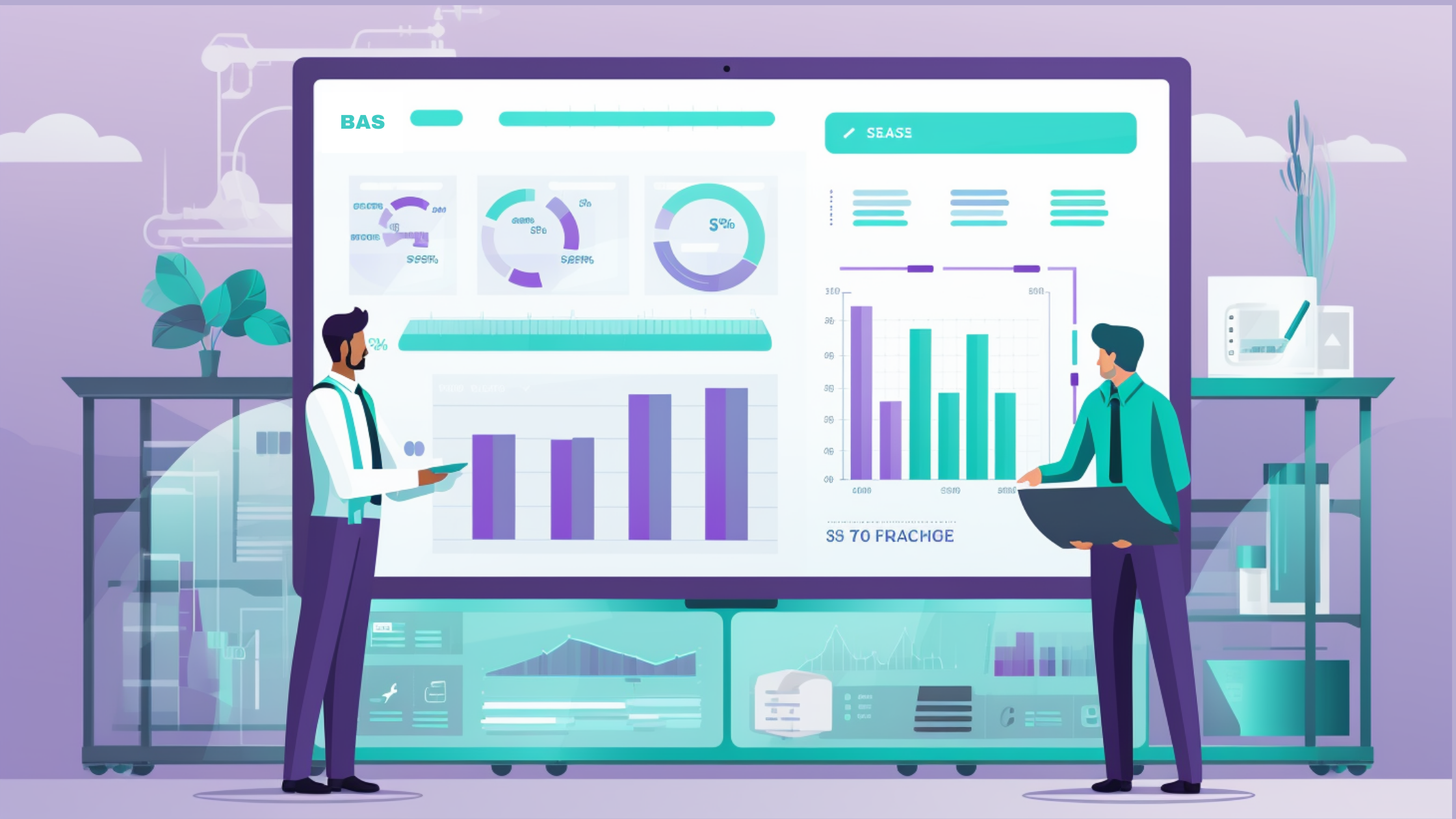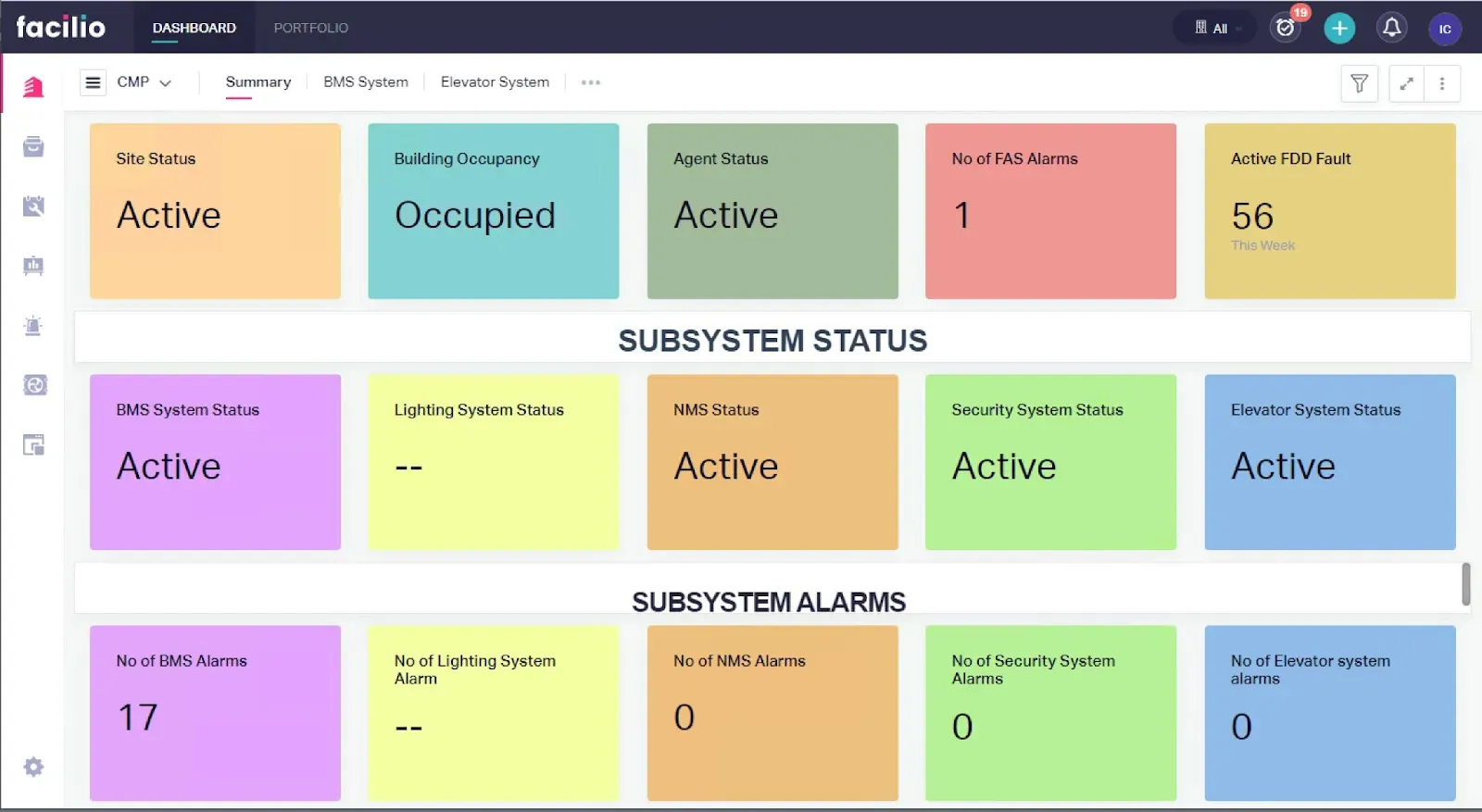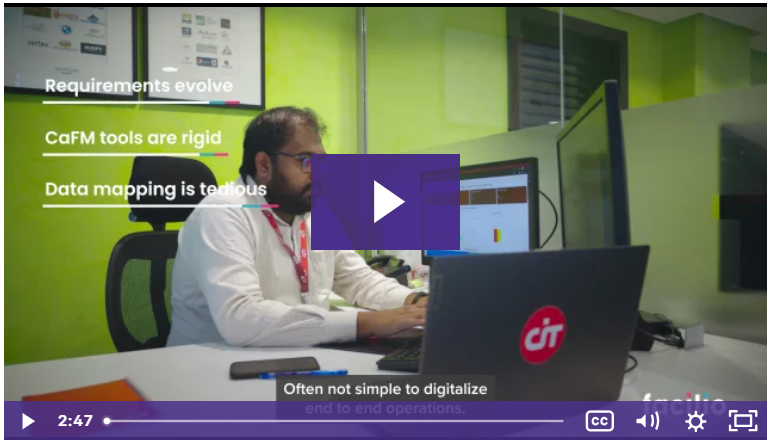Building Management System (BMS): An Overview for Operational Excellence
Walking into a building where the elevators open without delay and the HVAC systems are perfectly regulated, is immensely satisfying.
However, achieving synergy across all systems requires an integrated solution that tracks energy consumption, operation times, and benchmarks performance. This is where a building management system (BMS) comes into play.
A building management system ensures occupant safety, reduces operational costs, and maintains excellent air and water quality.
Its role in driving efficiency has become more vital, especially with the Smart Cities market projected to reach a staggering US$72.52 billion in revenue by 2024.
In this article, we'll delve into what a building management system is, explore its benefits and purpose, and highlight some of the top BMS solutions in the market.
What is a building management system?
From controlling the heating, ventilation, and air conditioning (HVAC) systems, lighting systems, and electrical systems to fire safety and security systems, a building management system provides centralized control over all operations.
It aims to streamline operations for buildings to achieve peak operational efficiency and occupant comfort.
Let’s take an example.
One of your facilities undergoes frequent water leaks and power shortages.
Integrating a building management system with a sensor can send a signal to the BMS, issuing an alert. And with an advanced Internet of Things (IoT) integration system, it’ll let you know the energy consumption trends. Additionally, it gives you dashboards with customizable parameters to get to the root cause of such leaks.
But how do you oversee multiple facilities without the hassle of hopping through multiple logins?
By enabling BMS single sign-on (SSO).
BMS SSO is an authentication process that lets you access multiple applications or systems with a single set of login credentials. Since BMS SSO relies on a centralized authentication server, it enforces strong security policies like multi-factor authentication (MFA), ensuring overall system security.
Building management system vs building automation system
Understanding the differences between them is crucial for selecting the right solution for your building's needs.
Suggested Read:

What is a smart building?
A smart building uses advanced technologies and integrated subsystems to improve the building’s overall efficiency, as well as the safety and comfort of the occupants.
Think of a smart building as a network of subsystems that communicate with each other. They take inputs from data sources like sensors and are responsive to the needs of the facilities manager and the occupants, all the while promoting a sustainable living environment.
Imagine this: In case of an intrusion or an anomaly in any building operation, the sensor issues an alert to the facilities manager. It can also detect potential equipment failures, segment devices based on their behavior trends, and enhance fault detection and diagnostics.
But to achieve your sustainability goals and stay compliant with industry standards, you might need more than your existing building management system.
Here’s how to take your facilities from 'smart' to 'smarter'.
Checkout Our Smart Buildings Webinar Series on how Robert dyas achieved 20% energy savings in 3 months

Integrate IoT sensors
These devices will constantly monitor building parameters such as humidity, occupancy, temperature, and energy consumption. It lets the building management system make real-time adjustments to optimize performance and reduce energy wastage.
For example, a building management system using artificial intelligence (AI) driven sensors foresees potential HVAC failures and schedules maintenance with the respective contractor preventing costly repairs and downtime. Learn more on How HVAC Preventive Maintenance can Sustain and Maximize Energy Efficiency
Integrate asset management software
With asset management software solutions, make data-driven decisions with the power of predictive maintenance and streamline asset monitoring and management. Facilio’s cloud-based software gives you a 360-degree view of all your facilities' asset health.

Integrate energy management systems (EMS)
The right energy management system enables you to control and manage the energy consumption of assets across your portfolio. It manages, monitors, and optimizes energy usage resulting in reduced costs, increased operational efficiency, and achievement of sustainability targets.
Integrating these systems into your existing building management system takes operational efficiency through the roof while maintenance costs dive.
For example, a visitor management software can be integrated with your building management system to coordinate guest access with building sensors and security workflows.
Factor in all the features your existing building management system offers, then pick a solution that best suits your facility’s needs.
For example, if your goal is to manage all your facilities’ assets, an asset management solution is the way to go. However, if your priority is optimizing the energy usage across all assets, an EMS will give you the desired results.
How does a building management system work?
A building management system primarily involves gathering data, followed by data processing and analysis, and continuously monitoring systems to detect anomalies and take immediate action.
1. Data collection
Sensors are everywhere, quietly gathering data from temperature change to how much energy the elevators are using. They keep a keen and constant eye on environmental conditions so that if any parameter deviates from normal, they catch it.
Apart from sensors, the data sources include energy meters, water meters, elevator systems, etc.
2. System control
The sensors don’t simply watch the environment. They communicate the information with the controllers. So if the sensor detects a sudden temperature rise, it commands the HVAC system to reduce the temperature.
Such condition-based maintenance reports faults as they appear. As a facilities manager, this means you have control to tune and tweak the operations to keep everything running smoothly.
Consider using BMS SSO to access all facilities’ operations from a single interface.
3. Real-time monitoring
The building management system continuously monitors all systems and generates reports on their performance. This means it isn’t just reactive but proactive. From energy consumption trends and system efficiency to dashboards on sustainability goals, you can know how a building is performing at any given moment.
Why use a building management system?
When installed and maintained regularly, a building management system has numerous benefits.
Reduces operational expenses
Since a building management system automatically adjusts heating, cooling, and lighting based on occupancy, it prevents energy wastage and lets facility managers (FMs) identify inefficiencies. Further, with real-time data, a building management system schedules regular maintenance tasks, increasing the lifespan of all equipment, and lowering operational costs.
Take immediate action from contextual insights
Real-time monitoring lets facility managers know about potential equipment failures. This immediate insight on equipment across facilities lets you address issues promptly.
For example, when an HVAC unit runs at full capacity despite 50% less occupancy, it leads to higher costs, energy wastage, and frequent equipment failures. With a building management system, such issues are taken care of.
Increase tenant comfort
It ensures a comfortable environment for building occupants through automated climate control and lighting adjustments. Whenever the temperature rises or dips, the HVAC system automatically reduces it or increases it depending on the data.
Simplify management
It streamlines building operations and maintenance with centralized control and automated processes. With BMS SSO, you can simplify it even further by operating all facilities by logging into a single system.
Environment-friendly
All the above-mentioned benefits promote sustainability by reducing energy consumption and optimizing resource usage.

Does it make sense to integrate your building management system with other systems?
Managing facilities is ensuring all aspects of the facilities work in synergy. Hence it makes sense to integrate other smart systems with your existing building management system.
Enhanced efficiency
Let’s say you integrate an energy management system or a refrigeration compliance management system. When both these systems work hand-in-hand, it ensures all equipment works efficiently, increasing the overall efficiency of the building.
Improved data insights
With smart sensors and IoT-based monitoring, you get accurate data inputs that help make informed decisions whether it’s about energy usage, equipment failures, or environmental conditions.
Streamlined operations
Depending on which system your facility benefits from, implementing it streamlines the entire facility management ecosystem.
Are BMS and DCIM Interchangeable?
A building management system covers broader building systems and gives insights into HVAC, security, lighting, and other systems. Its primary goal is to optimize building operations to increase occupant comfort and safety.
A building management system caters to:
- Commercial buildings
- Healthcare facilities
- Educational institutions
- Retail stores
- Hotels
- Residential complexes
- Industrial buildings
A DCIM specifically monitors, manages, and optimizes components of the data center infrastructure such as servers, networking equipment, cooling systems, and storage.
A DCIM caters to:
- Data centers
- Financial institutions such as banks
- Telecom companies
- Tech and IT companies
- Government agencies
Last year, we surveyed over 180 leaders in the smart buildings industry, asking them nuanced questions about their thoughts and insights. As a result, we developed a step-by-step guide to unlocking your smart building’s potential.
Read all about it here:

The best building management system
Basic building management systems are equipped with HVAC, lighting, and basic security and access controls. However, a sophisticated building management system has the following features:
- Integrates with other systems (security, fire safety, access control)
- Offers built-in support for smart sensors and IoT devices
- Has user-friendly interface
- Offers third-party integrations and open protocols
- Mobile access for remote monitoring
- Configurable alerts
- Scalable
Quick Comparison: Best Building Management System
1. Facilio
Imagine all your facilities seamlessly running like a well-oiled machine. That’s exactly what Facilio does–it’s the glue that keeps your facility operations cohesive and operationally efficient.

No more siloed building management systems across the portfolio. Facilio integrates them smoothly to boost your assets' health, achieve sustainability targets, and gain a competitive advantage with contextual real-time insights.
Further, it simplifies everything, freeing you from integration headaches. Its IoT prowess effortlessly connects all your building systems, no matter the type or proprietary data protocols. And with BMS SSO, you can access all buildings’ operations effortlessly and securely.
Facilio’s key features
- Enhanced visibility and communication
Legacy systems often fall short in providing granular visibility across your portfolio. Facilio solves this by consolidating real-time data from your existing building systems into a single platform, enhancing visibility and comprehensive insights into building performance.
For example, in the sudden event of a water leak, Facilio not only alerts tenants, technicians, and FM leaders, but also facilitates communication among them for timely resolution.
ICD Brookfield, a 54-storey Dubai-based skyscraper lacked visibility due to siloed building systems, leading to delays in fault detection and resolution.
Facilio’s connected buildings solutions integrated their entire supply chain to the ERP, IT systems, elevator, lighting, fire alarms, and a total of 24 service providers for centralized operations.

“We needed a scalable and flexible solution to unify all of our disparate building systems. Facilio's thought leadership and innovative product portfolio stood out clearly & aligned well with our vision. As we look forward to launching the workplace of the future, we are proud to work with a partner like Facilio.”
- Rob Devereux l CEO of ICD Brookfield
- Predictive maintenance capabilities
Facilio taps all crucial data points of your equipment and improves predictive maintenance and fault prevention with contextual real-time insights.
CIT Ltd. leveraged Facilio's platform to gain visibility into predictive maintenance activities which significantly lowered equipment downtime and increased cost savings.

- Fault detection and automated workflows
Managing multiple facilities makes it difficult to respond to anomalies quickly. Facilio's Fault detection and diagnostic solution gives you total situational awareness of your buildings. Plus it automates work orders to ensure your facilities quickly return to normal. Choose the relevant category and priority and you’re good to go.

- Energy optimization
With IoT integration, Facilio helps you achieve your sustainability targets by constantly monitoring energy metrics for all equipment, ensuring effective sustainability management.
Additionally, it unlocked high chilled water saving potential by avoiding penalties due to chilled water temperature exceeding regulatory standards.
Ratings & review - 4.0 ⭐️⭐️⭐️⭐ (+24 reviews on Capterra)
Pricing: Facilio offers custom pricing packages. Reach out to the software provider to get a custom quote.
It’s ideal for
FM leaders seeking a comprehensive, AI-driven building management solution.
2. Honeywell Forge
It's a cloud-based building management system for enterprises seeking advanced analytics and real-time data to optimize operational efficiency.
Features
- Integrates advanced analytics, AI, and IoT
- predictive maintenance
- Energy management solutions
- Scalable
Ratings & review
Pricing
Visitor management solution starts at $69/month. Reach out to the provider for custom pricing.
It’s ideal for
FM leaders seeking an efficient visitor management solution.
3. Schneider Electric’s Ecostructure ADMS
It integrates a distribution management system (DMS), supervisory control and data acquisition (SCADA), outage management system (OMS), and EMS(Energy Management System) for improved grid efficiency.
Features
- Integrated building management solutions
- Advanced analytics
- User-friendly interface
- Easy integration with IoT devices
Ratings & review - 5.0 (+1 review on G2)
Pricing: Reach out to the software provider to get custom pricing.
It’s ideal for
Utility companies and grid operators seeking a unified platform to optimize energy optimization and achieve sustainability targets.
4. Johnson Controls Metasys
It's a building automation system that integrates lighting, security, HVAC, and fire safety for efficient facility management.
Features
- Robust automation capabilities
- Energy optimization tools
- Real-time monitoring
Ratings & review
Pricing: Custom pricing options available
It’s ideal for
FM leaders seeking a building automation system to optimize operational efficiency.
5. IBM Maximo Application Suite
It's a cloud-based solution that provides comprehensive asset management, and AI capabilities for predictive maintenance and real-time monitoring.
Features
- Comprehensive control and building monitoring
- Easy integration
- Advanced automation
- Centralized management
Ratings & review - 4.2 (+79 reviews on Capterra)
Pricing: The basic plan starts at 250$/month; they offer a free trail of the product.
It’s ideal for
FM leaders from any industry seeking a comprehensive facilities’ operations management solution.
Liberate your BMS data and bring your buildings to life
Facilio goes beyond centralizing your facilities’ operations—it acts as your strategic partner in changing how your facilities operate.
The platform’s IoT and cloud-based solutions easily integrate with your existing building management system to optimize operations, reduce costs, and enhance building management with real-time analytics and centralized control.
With automated reporting, predictive maintenance, and proactive asset management, Facilio frees you from decision paralysis caused by scattered or inadequate information.


